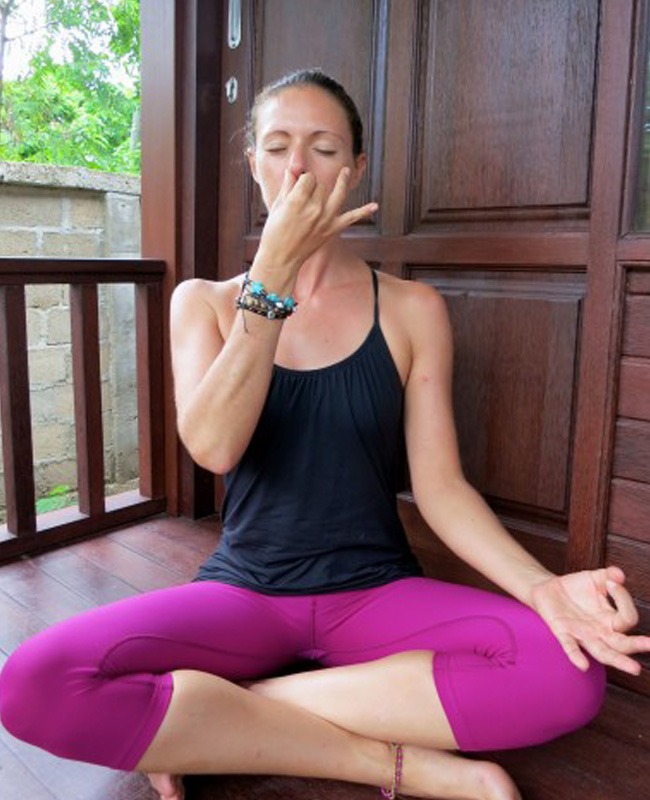Pranayama Benefits
PRANAYAMA
WHAT IS PRANAYAMA AND HOW DOES IT INFLUENCE THE BODY?
Prana is the vital or etheric force which pervades the whole cosmos. It is in all things, whether animate or inanimate and is closely related to the air we breathe but is not exactly the same thing. Prana can be defined as the energy essence that is within everything in the universe. Yama means to control.
Pranayama thus is a series of techniques which stimulate and increase the vital energy, ultimately bringing about perfect control over the flow of prana within the body.
It is not mere breathing exercises to introduce extra oxygen into the lungs. Breathing is the technique used in pranayama to influence the flow of prana in the pranic channels of the body. the oxygen inhaled purifies them and induces physical and mental stability. The practice of breath retention brings about control of the prana and eventual mastery of the mind.
Traditionally, the prana in the body is divided into five elementary parts which are collectively known as the pancha pranas (five pranas). They consist of prana, apana, samana, udana and vyana.
Prana
This is not the overall prana but belongs to a specific part of the body located in the region between the larynx and the top of the diaphragm. It is associated with the respiratory organs, the organs of speech, and the gullet, together with the muscles and nerves that activate them. It is the force by which the breath is drawn inside.
Apana
This is located below the navel region and provides energy for the large intestines, kidneys, anus and genitals. It is concerned with the expulsion of prana through the rectum and the nose and mouth.
Samaria
This is concerned with the region between the heart and navel. It activates and controls the digestive system: liver, intestines, pancreas, stomach, and the secretions they supply. Samaria also activates the heart and circulatory system. It is responsible for assimilation of nutrients.
Udana
The body above the larynx is controlled by udana. Thus the eyes, nose, ears, and all sensory receptors are activated by this prana. This provides us the ability to think or be conscious of the outside world.
Vyana
This vital force regulates and controls all movement of the body and co-ordinates the other vital energies. Vyana pervades the whole body and harmonizes and activates the limbs, their associated muscles, ligaments, nerves and joints. It is also responsible for the erect posture of the body.
Upa pranas
There are also five upa pranas: naga, koorma, Arikara, Devadatta and Dhananjay. They are concerned with minor actions such as sneezing, yawning, scratching, belching, hiccuping and hunger.
Vayus
All these pranas are controlled by the vayus. Each vayu is associated with one prana, and has the same name. For example, apana vayu controls the apana vital energy. These vayus are generated by the breathing process, and it is through them that pranayama can influence the vital forces in the body.
WHAT IS THE EFFECT OF BREATHING ON LIFE PROCESSES?
Air is the vital force for rejuvenation of the body energy. Man’s lifespan depends much on his mode of respiration. A person who breathes in short, quick gasps is likely to have a shorter life than a person who breathes slowly and deeply. The Indian mythology defines a person’s lifespan, not in years but by the number of his respirations. It stipulates that everyone is allocated a fixed number of respirations in his life, differing for each person. By making each respiration longer, one’s life is prolonged. By breathing deeply one is able to gain more vitality or prana from each respiration.
The ancient yogis carried out a detailed study of the wild animals in great detail. Animals with a slow breathing rate, such as snakes, elephants and tortoises have a long lifespan. Animals with fast breathing rates, such as birds, dogs, rabbits, etc. live only a few years.
Respiration is directly related to the heart. Slow respiration occurs with a slow-beating heart, and a slow-beating heart is conducive to long life. The heart of a mouse beats one thousand times per minute. It only has a short lifespan. A whale’s heartbeat is about sixteen times per minute and an elephant’s about twenty five. Both are renowned for their long life.
WHAT IS THE CORRECT BREATHING PROCESS IN YOGA?
As already established, breathing essentially is the energy providing process of the body. Obtaining the maximum amount of air with least effort is important. Most of us breathe incorrectly, using only a small part of our lung capacity. Our breathing is shallow and the result is that our body and brain are starved of oxygen. By shallow respiration, we also build up stagnant air in the lower regions of the lungs.
The importance of supply of the correct amount of oxygen to the body is essentially felt during sickness and pure oxygen is pumped in to the body. It is necessary to learn to breathe properly and gain good health.
Without breathing we cannot live; by half breathing we only half live.
Next Part…



Facebook Comments